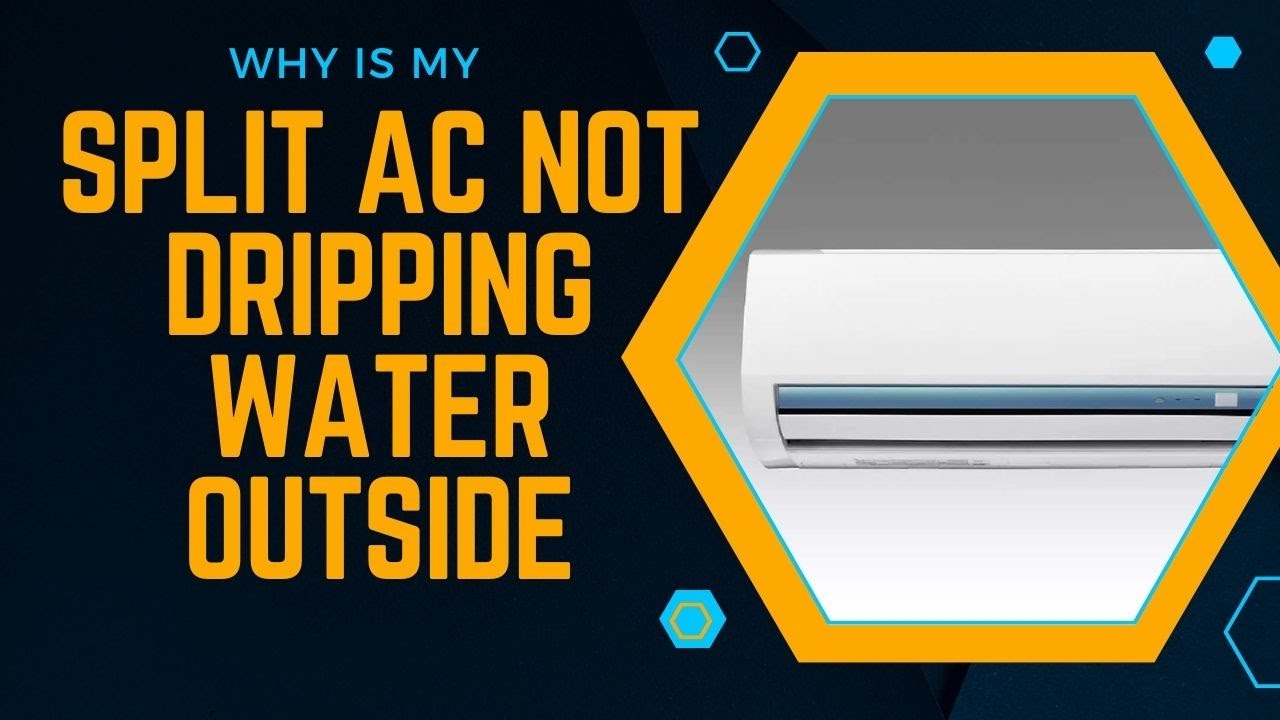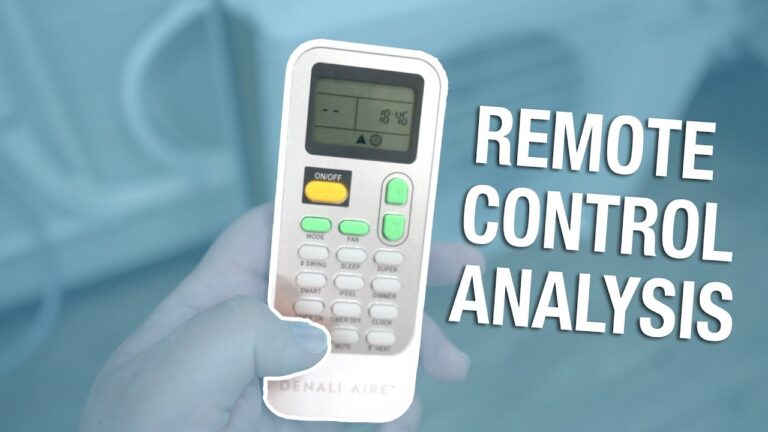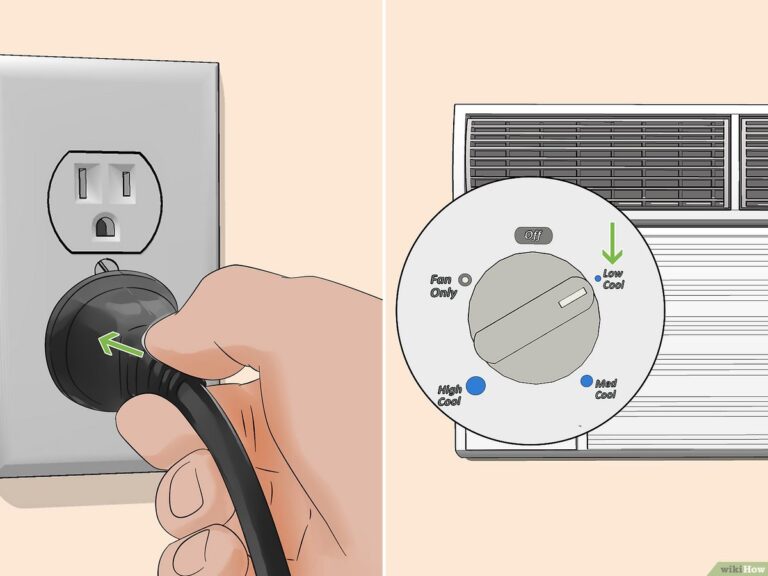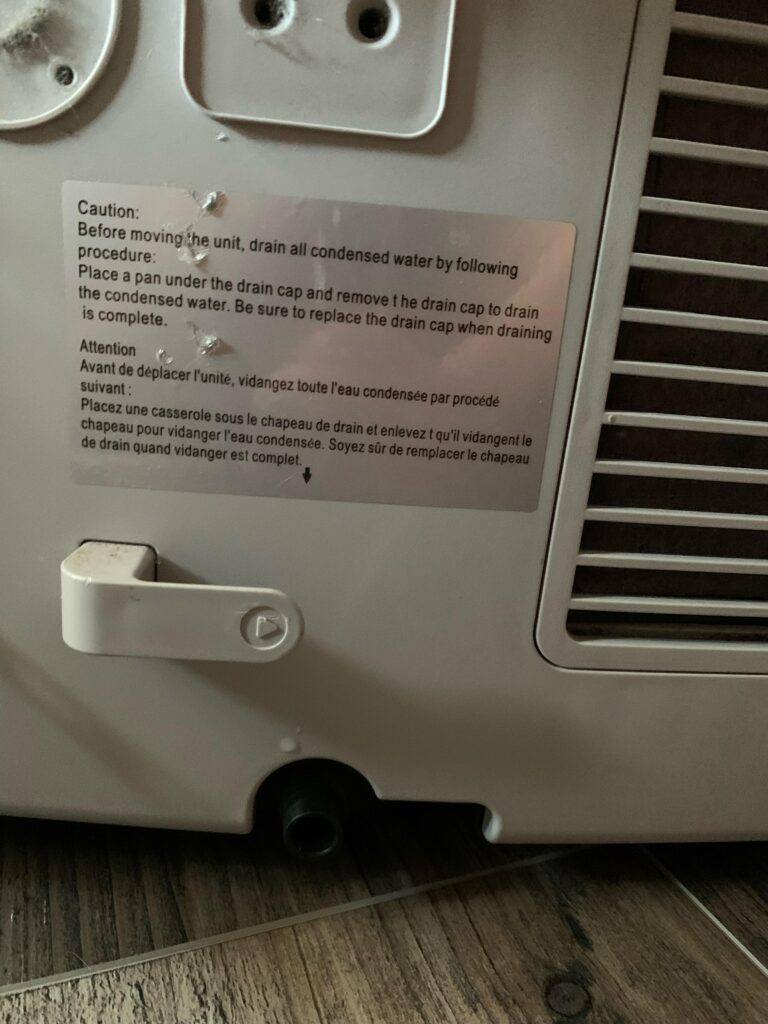Why Is My Split AC Not Dripping Water Outside? Troubleshooting Guide
Your split AC may not be dripping water outside due to a clogged drain line or low refrigerant levels. These issues prevent proper condensation drainage.
Split AC units rely on efficient condensation drainage to function correctly. A clogged drain line can cause water to back up and stay inside the unit. Low refrigerant levels affect the cooling process, reducing condensation. Regular maintenance ensures these components work properly.
Clean the drain line and check refrigerant levels to maintain efficiency. Addressing these issues promptly can prevent further damage and ensure optimal performance. Regular inspections by a professional technician can help identify and resolve these problems early. Ensuring proper drainage and refrigerant levels keeps your AC running smoothly and prolongs its lifespan.
Common Causes
Is your split AC not dripping water outside? This issue can signal several problems. Let’s explore the common causes to help you diagnose the problem.
Clogged Drain Line
A clogged drain line is often a primary cause. Dirt, dust, and mold can block the drainage path.
- Debris Build-Up: Dirt and dust block the drain line.
- Mold Growth: Mold can grow in moist areas, causing blockages.
Regular cleaning of the drain line can prevent this issue. Use a vacuum or a long brush to clear out any blockages.
Low Refrigerant Levels
Low refrigerant levels can also stop the dripping. This issue affects the AC’s cooling efficiency.
- Low Cooling Efficiency: The AC can’t cool effectively.
- Ice Formation: Ice may form on the evaporator coils.
Check the refrigerant levels. If they are low, a professional technician should refill it. This will restore the AC’s normal function.
Credit: www.lg.com
Identifying Clogs
Clogs in your split AC can stop water from dripping outside. This is a common issue that needs prompt attention. Identifying clogs early can save you from costly repairs.
Signs Of Blockage
Understanding the signs of a blockage helps in early detection. Here are some common signs:
- Water leakage inside: Water may leak inside your home.
- Reduced cooling: Your AC may not cool efficiently.
- Strange noises: You might hear gurgling or bubbling sounds.
- Foul smell: A musty odor may come from the unit.
Tools Needed
Having the right tools is essential for clearing clogs. Here is a list of tools you might need:
| Tool | Purpose |
|---|---|
| Vacuum Cleaner | For sucking out debris |
| Pipe Brush | For scrubbing the drain pipe |
| Bleach Solution | For sanitizing the drain line |
| Screwdriver | For removing panels |
Ensure you have these tools ready before you start checking for clogs.
Checking Refrigerant Levels
One common reason why your split AC may not be dripping water outside is due to low refrigerant levels. Refrigerant plays a vital role in the cooling process. If levels are low, the AC may not function properly.
Symptoms Of Low Refrigerant
Low refrigerant levels can cause several noticeable symptoms:
- Reduced Cooling Efficiency: The AC might not cool the room effectively.
- Longer Cooling Cycles: The AC runs longer to reach the desired temperature.
- Ice Formation: Ice may form on the evaporator coils.
- Hissing or Bubbling Noise: Unusual sounds might come from the unit.
- Increased Energy Bills: The AC consumes more power than usual.
How To Measure
Measuring refrigerant levels requires specialized tools and skills. Here’s a basic guide:
- Turn Off the AC: Ensure the unit is off before starting.
- Locate Service Ports: Find the low and high-pressure service ports.
- Attach Gauges: Connect the gauges to the service ports securely.
- Check Readings: Turn the AC back on and observe the gauge readings.
- Analyze Data: Compare readings with the recommended levels.
It is best to consult a professional for accurate measurement and refilling. Incorrect handling can damage the unit and cause safety hazards.
Inspecting The Drain Pan
One common reason for your split AC not dripping water outside could be a problem with the drain pan. The drain pan collects condensation and channels it out of the unit. If there are issues with the drain pan, water won’t flow out properly.
Signs Of Damage
First, look for visible cracks or holes in the drain pan. Use a flashlight to check thoroughly. If water is pooling in the pan, that’s a bad sign. Also, check for rust or corrosion, which can indicate older damage.
| Signs | Description |
|---|---|
| Cracks | Visible splits in the pan material |
| Pooling Water | Water accumulates instead of draining |
| Rust | Corrosion marks that weaken the pan |
Cleaning Tips
Keeping your drain pan clean is crucial. Follow these steps for an effective clean:
- Turn off the AC unit.
- Remove the drain pan carefully.
- Use a mild detergent and water to scrub the pan.
- Rinse thoroughly with clean water.
- Let the pan dry completely before reinstalling.
For tough stains, use a mixture of vinegar and water. This helps in removing any mold or algae buildup.
Regularly inspect and clean the drain pan to avoid future problems. A clean pan ensures your AC works efficiently.
Examining The Evaporator Coil
The evaporator coil in your split AC can sometimes cause issues. If your split AC is not dripping water outside, the evaporator coil might be the culprit. This coil is essential for cooling and dehumidifying the air. When it malfunctions, it can disrupt the entire system.
Signs Of Freezing
Freezing of the evaporator coil can stop water drainage. Here are some signs:
- Ice on the coil
- Weak airflow
- AC not cooling efficiently
- Water leaks inside the house
If you notice these signs, your evaporator coil might be freezing. This requires immediate attention to avoid further damage.
Maintenance Tips
Regular maintenance can prevent evaporator coil issues. Follow these tips:
- Clean the coil: Dust and dirt can cause the coil to freeze.
- Check refrigerant levels: Low refrigerant can lead to freezing.
- Inspect the air filter: A clogged filter reduces airflow and causes freezing.
- Ensure proper ventilation: Good airflow around the coil prevents freezing.
- Schedule professional checks: Regular professional maintenance can identify issues early.
Following these tips can help keep your evaporator coil in good condition. This ensures your split AC functions correctly.
Reviewing The Installation
Is your split AC not dripping water outside? The installation might be the problem. Reviewing the installation can help identify issues. This section will guide you through key installation checks.
Proper Slope
The indoor unit must have a proper slope. This ensures water flows correctly to the drain pipe. Incorrect slope can cause water to stay in the unit. Use a level tool to check the slope. The slope should be slightly downward towards the drain pipe.
| Component | Correct Slope |
|---|---|
| Indoor Unit | Downward |
| Drain Pipe | Slightly Downward |
Drain Line Placement
The drain line must be placed correctly. It should not be blocked or kinked. A blocked drain line can cause water to back up. Check for obstructions in the drain pipe. Make sure the drain line runs smoothly to the outside.
- Inspect for blockages
- Ensure smooth flow
- Check for kinks
Reviewing the installation steps can solve many issues. Ensure the proper slope and correct drain line placement. This will help your split AC drip water outside as it should.
Using Ac In Humid Conditions
Many people use air conditioners (AC) to stay cool during hot, humid days. But sometimes, their split AC doesn’t drip water outside. This can be confusing and frustrating. Understanding how humidity affects your AC can help solve this problem.
Impact On Water Dripping
Humidity makes the air heavy with moisture. When your AC cools the air, it removes this moisture. This process is called condensation. Normally, this water drips outside through a drain pipe. But in very humid conditions, your AC may struggle. It might not remove all the moisture efficiently. This can stop the water from dripping outside.
Another reason could be a clogged drain pipe. Dirt and debris can block the pipe, stopping water flow. If the pipe is blocked, the water can’t escape. It stays inside the unit, and you may see water pooling around the AC.
Preventive Measures
To keep your AC working well, regular maintenance is key. Clean the filters and check the drain pipe often. Make sure there is no blockage. This helps the AC remove moisture efficiently.
Use a dehumidifier if you live in a very humid area. A dehumidifier helps reduce moisture in the air. This makes it easier for your AC to cool the room and remove water. Keep your AC set at a moderate temperature. Extreme cold settings make your AC work harder, which can affect its efficiency.
Here are some preventive measures in a table format:
| Measure | Description |
|---|---|
| Regular Maintenance | Clean filters and check drain pipe |
| Use a Dehumidifier | Reduce moisture in the air |
| Moderate Temperature Settings | Prevent overworking the AC |
Following these steps can help keep your AC in good condition. This will ensure it drips water outside as it should.

Credit: www.sandium.com
Professional Help
Sometimes, your split AC not dripping water outside could be a sign of a more serious issue. Seeking professional help ensures that your AC gets the right diagnosis and treatment. Expert technicians can quickly identify and fix the problem, saving you time and trouble.
When To Call A Technician
- If you notice any unusual noise from the AC unit.
- Water leaking inside your home instead of outside.
- Unpleasant odors coming from the AC unit.
- The AC is not cooling as it should.
- If you’ve tried basic troubleshooting steps without success.
These signs indicate that a professional technician is needed. Early intervention prevents further damage and costly repairs.
Cost Considerations
Hiring a technician involves costs, but it can be worth it. Here are some cost considerations:
| Service | Estimated Cost |
|---|---|
| Basic Inspection | $50 – $100 |
| Minor Repairs | $100 – $200 |
| Major Repairs | $200 – $500 |
| Full System Replacement | $1,500 – $3,000 |
Costs vary based on the issue and location. Regular maintenance can reduce these expenses. Investing in professional help can extend the lifespan of your AC unit.
Credit: www.quora.com
Frequently Asked Questions
What Happens If Ac Does Not Release Water Outside?
If an AC does not release water outside, it may indicate a clogged drain line or faulty installation. This can lead to water damage, mold growth, and reduced cooling efficiency. Regular maintenance can prevent these issues.
Why Is My Ac Not Dripping Outside?
Your AC may not be dripping outside due to a clogged drain line, low refrigerant, or a faulty pump. Regular maintenance can prevent these issues.
Why Is My Split Ac Not Draining Water?
Your split AC might not be draining water due to a clogged drain line, dirty filter, or low refrigerant levels. Regular maintenance can prevent these issues. Ensure the unit is level and check for any blockages or kinks in the drain hose.
Conclusion
A split AC not dripping water outside can signal various issues. Regular maintenance is key to preventing these problems. Check for clogged filters, blocked drain pipes, or refrigerant levels. Addressing these concerns ensures your AC runs efficiently and extends its lifespan.
Always consult a professional for accurate diagnosis and repair.







